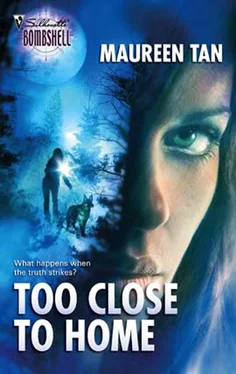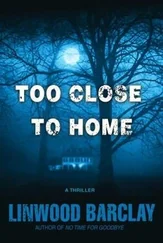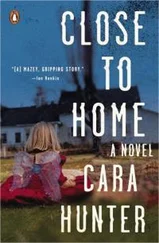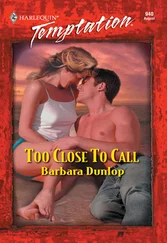Not Tina. Thank God, not Tina.
An adult, long dead.
Then my stomach twisted at a sudden and uninvited notion. These bones were Missy Porter, come back to haunt me.
Angrily, I pushed aside the preposterous thought.
Don’t be stupid, I told myself. Though she was long dead, too, Missy’s body hadn’t been concealed within the cocoon of an ancient cottonwood. She would never be embraced by warm, dry earth. Her remains were entombed in steel, hidden where water tupelo and bald cypress sank roots deep into still, oily water. A place where black vultures, frogs and water moccasins were the only witnesses to human secrets.
I knew that because I’d put her there.
Possum barked and barked again.
A child cried out, and the sound was one of surprise rather than pain.
“Go ’way!”
The voice was slurred with sleep.
Yanking my thoughts away from remembered horror and my flashlight’s beam away from newly discovered horror, I directed the light over the edge of the ledge. Below me, all I could see of Possum was his enthusiastically wagging tail. The rest of his body was hidden by the overhang I was on.
“Stop dat!”
A child’s voice.
“Tina?” I called, and then louder, “Tina!”
“I want my mommy!” she said.
I climbed down to the next ledge with more haste than care. And found her.
She was sitting tucked back into a shallow cave that was little more than a depression in the limestone wall, yelling at Possum, pummeling my dog with tiny fists and sneaker-clad feet. Possum had stretched out beside the child, trapping her against the ravine wall. The more Tina struggled and flailed, the more Possum was determined to care for her, mostly by licking her face.
I called Possum to me, ruffled his fur, patted his head, told him he was a fabulous, wonderful, marvelous dog. His body wiggled with such enthusiasm that I briefly feared he might send us both toppling over the edge.
After a few moments, I pointed at a spot a few feet from the child.
“Now sit,” I said, “and stay.”
Tina added to the command sequence.
“Berry bad dog,” she wailed. “Berry, berry bad.”
I knelt beside her and pulled the teddy bear from my belt.
“Oh, no. Possum’s a good dog. Aren’t you, Possum? See, he found Maxi for you.”
Tina quieted immediately as she grabbed the teddy bear. She hugged the poor, torn thing to her chest and covered its grubby head with kisses.
There was nothing to do but wait.
Too hazardous by far to carry Tina out, risking the narrow ledge that Possum had followed down into the ravine. Foolish and probably impossible to climb back the way I’d climbed down. Chad, I knew, was already on his way. And I admitted to myself that that was a comforting thought.
I looked at the luminous numbers on my watch, saw that Possum and I had been in the woods for just under two hours. Chad and his people, using my markers to find their way, would probably only take half that long to reach us. Though the nighttime temperature was probably still in the mid-eighties, the face of the ravine and the limestone outcropping were damp and cold. So I settled Tina onto my lap and wrapped my shirt around her. Possum curled in beside me and I was grateful for the additional warmth.
As I checked Tina for injuries, we chatted about teddy bears and big trees and missing bedtime and adventures in the woods. By the time I’d determined that Tina’s tumble down to the ledge had miraculously cost her nothing but a few scrapes and bruises, I’d learned most of what I needed to know. Maxi, it seemed, had gotten hungry, so he and Tina had gone into the woods looking for a honey tree. Just like in Winnie the Pooh. It had gotten dark. They’d walked and walked. And then they’d fallen down. Now Tina and Maxi were really, really hungry.
There was no honey for her that night, but the granola bar and lime-flavored sports drink I shared with Tina seemed to do the trick. We offered Maxi and Possum crumbs, which Possum ate with tail-wagging enthusiasm. Tina announced that her teddy bear judged the snack yummy. Then, with Maxi wrapped in her arms, she fell asleep.
I was tired, physically and mentally tired. But I stayed awake anyway, irrationally alert to the presence of predatory spiders on the ledge where we sat. More rationally intent on protecting Tina and listening for the sounds of approaching rescuers. When I heard them, I would aim my flashlight’s beam into the sky to mark our exact location.
In the meantime, I waited.
Time passed slowly in the dark. I held Tina, embracing her warm, soft weight and listening to her breathing. And though it seemed inappropriate to think anything but bright and beautiful thoughts with a successfully rescued child in my arms, my mind quickly drifted to the dark, dirty business of the skeletal remains on the ledge just above me.
“Did you walk into the woods with your murderer?” I murmured under my breath.
Possible, I thought, but it didn’t seem reasonable for a murderer to lure or force a potential victim very far from a road or a trail. Why travel all the way to the ridge when the forest offered adequate, plentiful and more convenient places?
I considered another scenario.
“Were you killed somewhere else, then carried here?”
I shook my head, immediately dismissing the idea. A body is awkward and heavy to carry. My mind veered away from the reason I knew that, and I focused on the idea that no one carries that kind of weight any farther than they have to.
Killing someone in this place made no sense, I told myself. Unless the murderer had chosen the particular spot, the particular tree, for reasons that only a disturbed mind could fathom. But after nearly a year in law enforcement, I had great faith in the human impulse to do things the easy way.
Then it hit me. The ridge simply wasn’t as inconvenient as it seemed. Unless you were searching for a lost child, there was no reason to approach it from the Fishers’ backyard, to crash through the underbrush or walk along deer paths that were easy only for a child as small as Tina to follow. It was an indication of how exhausted I was that I hadn’t immediately considered that the murderer could approach the ridge from other directions.
I shifted slightly, settled Tina more comfortably into my lap, then pressed my eyes shut, picturing the map that Chad had laid out on the Fisher’s front porch. I thought about it, working to recall each of the roads and formal trails that crisscrossed the area. Then I visualized the route Possum and I had followed and estimated the distance we’d traveled.
Camp Cadiz, I realized, was actually much closer to us than to the Fishers’ house. Park a vehicle at Camp Cadiz, walk into the forest along the well-marked River-to-River Trail and cross the footbridge that spanned the ravine. After that, I figured the spot where Tina and I waited was no more than a quarter of a mile along the ravine from the bridge.
At gunpoint, a living victim could be forced to walk to this very place. And, if one was strong and determined enough, a body could be carried from the parking lot at Camp Cadiz to the place where I’d found the bones.
The campground—the most primitive of all the campgrounds in the Shawnee National Forest—was remote and only occasionally used by backpackers making the days-long river-to-river trek between the Ohio and the Mississippi. It was the kind of place where a murder could easily go unwitnessed.
I’d visited Camp Cadiz. Once. Eight years earlier. And I hadn’t been hiking. I’d been driving Gran, Katie and the woman we had just rescued to the safety of the Cherokee Rose. The detour to Camp Cadiz had been brief and unexpected, but the events of that night had seared the campground’s layout into my memory.
Читать дальше












